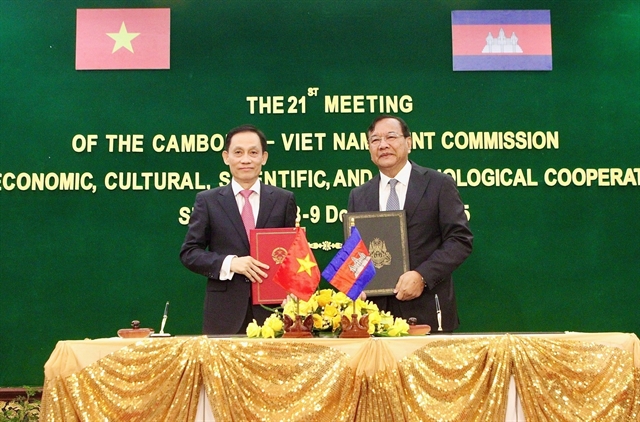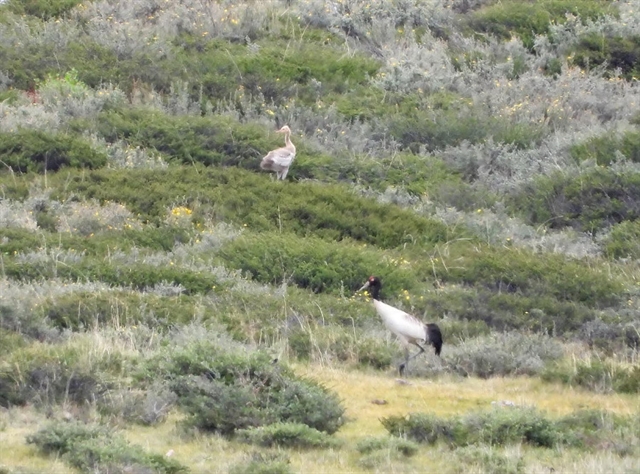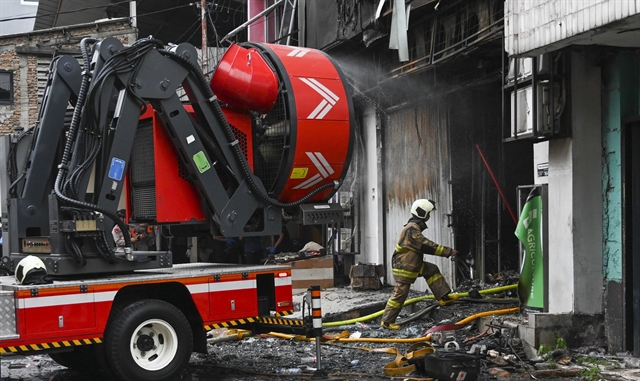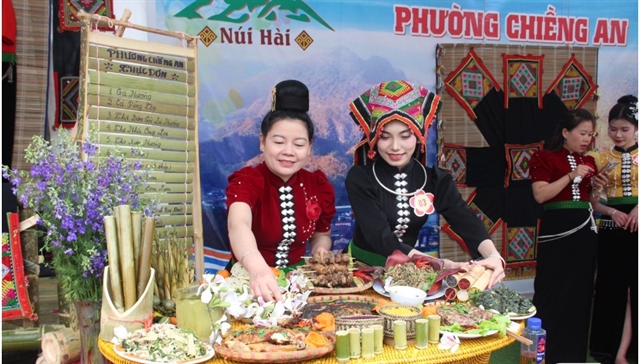 Features
Features
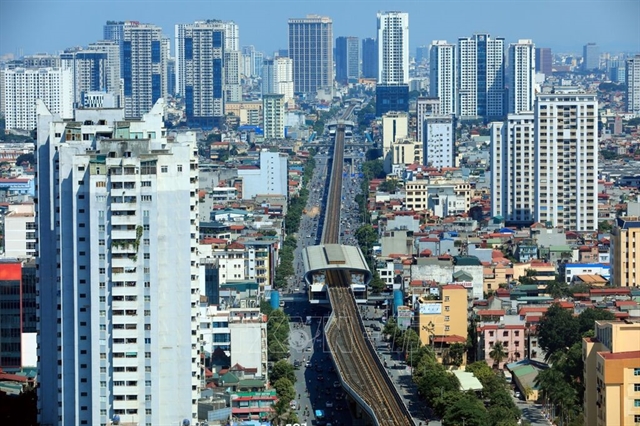
Every October, the Chăm ethnic minority from around the country, particularly those in the south-central province of Bình Thuận, celebrate the Katê Festival -- one of their biggest and most unique cultural activities.
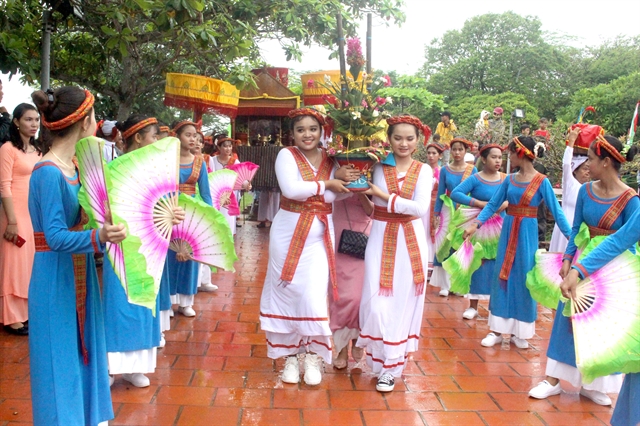
|
| FESTIVAL TIME: A procession carrying Pô Sah Inư Goddess costumes up to Pô Sah Inư Tower. VNA/VNS Photo Hồng Hiếu |
Every October, the Chăm ethnic minority from around the country, particularly those in the south-central province of Bình Thuận, celebrate the Katê Festival -- one of their biggest and most unique cultural activities.
The festival features a host of activities and ceremonies at ancient towers, with traditions including ancestor offerings, musical performances, and the signing of hymns praising kings who were prominent in the building and development of the Champa Kingdom and the Chăm people.
Thousands of local people and tourists got together at the Pô Sah Inư Tower in Bình Thuận’s Phan Thiết City in mid-October to attend this year’s festival.
The venue is a group of temple ruins of the ancient Kingdom of Champa, on Bà Nài Hill in Phú Hài Ward, about 7 km northeast of the centre of Phan Thiết.
Built 1,200 years ago, the attraction of this and other towers lies in the sophistication of their unique architecture and the art of the ancient Chăm people. There are, however, only three towers that have stood the test of time -- the main tower, the medium tower, and the small tower.
.jpg)
|
| AS ONE: Crowds gather as the Pô Sah Inư Goddess costumes pass by on the way to the tower. VNA/VNS Photo Hồng Hiếu |
Early in the morning of the first day of the festival, religious dignitaries of Brahmanism and a large number of Chăm attended a procession to the tower dressed in Pô Sah Inư Goddess costumes.
The procession took place through large crowds and to the sound of drums and trumpets amid graceful fan dances. It extended from the courtyard to the main tower and was followed by an opening ceremony at the tower gate, Linga-Yonialtar washing and dressing up, and another ceremony at the main tower.
The ritual ceremonies and cultural activities of the Katê Festival are held to remember the gods and pray for good weather, bumper harvests, and a happy life for all.
Therefore, at every Katê Festival, Chăm people present offerings and wish for health and happiness. The Chăm from all over the world return home to be with family and friends.
Following the rituals were various folk games bearing the cultural characteristics of the Chăm, such as walking on stilts, rice grilling, and carrying water up and over barricades.
Visitors can also participate in such games as well as many other activities, to learn about the characteristics of traditional Chăm craft culture as well as temple and tower architecture.
Đặng Thế Mừng, a visitor from HCM City, said this was the first time he had attended the Katê Festival but was very impressed with the culture on display.
“I felt quite excited being emerged in these cultural activities,” he said.
Deputy Director of the provincial Sports and Tourism Department, Võ Thành Huy, said Katê is one of six typical festivals chosen by Bình Thuận authorities to help with tourism development.
“After 15 years of restoration, the Katê Festival not only meets the spiritual needs of the Chăm, but also contributes to promoting the culture and image of Bình Thuận among tourists in the country and around the world,” he said.
This year’s Katê Festival held special meaning, as it also celebrated the success of the province’s 14th Party Congress, and was also part of a range of events celebrating the 25th Bình Thuận Tourism Day, on October 24.
The annual festival is held from the 30th day of the sixth month under the Chăm calendar to the 2nd day of the 7th month. It usually falls between the end of September and mid-October on the solar calendar.
It’s also an occasion for local people to take in traditional artistic performances by the Chăm, such as Apsara dances, Ginang and Paranung drums, and Saranai trumpets.

|
| PAST IN PRESENT: The traditional dances of the Chăm people count among the many cultural activities at the Katê Festival. VNA/VNS Photo Hồng Hiếu |
The Katê Festival has been recognised by the Ministry of Culture, Sports and Tourism as an intangible cultural heritage, and the annual event is a venue for the Chăm to express their gratitude to kings, mandarins and ancestors.
The first day of the festival often begins with a thanksgiving ceremony.
On the second day, the Chăm present offerings to their kings at ancient temples and pray for a peaceful and happy life. From the third day onwards, they celebrate at home and honour their ancestors.
People wear traditional outfits when taking part in rituals and cultural activities, folk dances, musical performances with traditional instruments, and folk games.
Katê is the Chăm people’s most important festival and one of the 15 largest in Việt Nam, attracting thousands of local people as well as domestic and international visitors every year.
Bình Thuận is currently home to some 39,600 Chăm people, primarily in the districts of Tuy Phong, Bắc Bình, Hàm Thuận Bắc, and Tánh Linh, with Brahminism followers numbering around 18,000.
In recent years, the policies of the Government and the province to boost investment in the development of ethnic minorities in mountainous areas, including the Chăm, have helped improve lives in rural areas all around Bình Thuận. VNS

